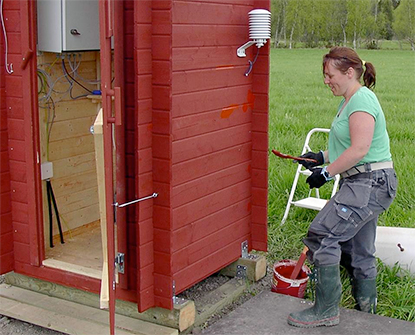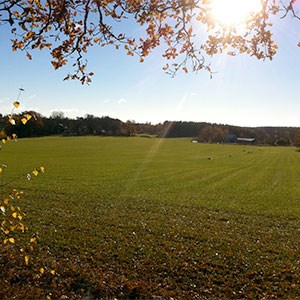
Maria Blomberg at a monitoring station in Jämtland, Sweden. Photo: Göran Johansson.
Monitoring of arable fields was established in different parts of the country in 1972 to study how farming affects the nutrient leaching in field drainage. The runoff from 12 fields is recorded continuously by a Campbell logger and drainage water samples are collected every two weeks using flow proportional sampling. The flow proportional samples are analysed for total nitrogen, nitrate nitrogen, total phosphorus, particulate bound phosphorus, suspended solids and total organic carbon and used to calculate nutrient fluxes.
In addition grab samples are collected every two weeks and analysed for pH, conductivity and alkalinity. Groundwater sampling is conducted in 9 arable fields (nitrate nitrogen, pH, conductivity and alkalinity).
Information on the cultivation of the field in terms of crops, fertilization, tillage, etc. is collected annually from the farmers. The monitoring fields are part of the farm's typical crop rotation and therefore they do not undergo any special treatment. The specific locations of the farms are not revealed, to maintain farmers' voluntary participation in the monitoring program.
The monitoring is part of the national environmental monitoring program commissioned by the Swedish Environmental Protection Agency.
 Helena Linefur, researcher
Helena Linefur, researcher Lisbet Norberg, researcher
Lisbet Norberg, researcher

